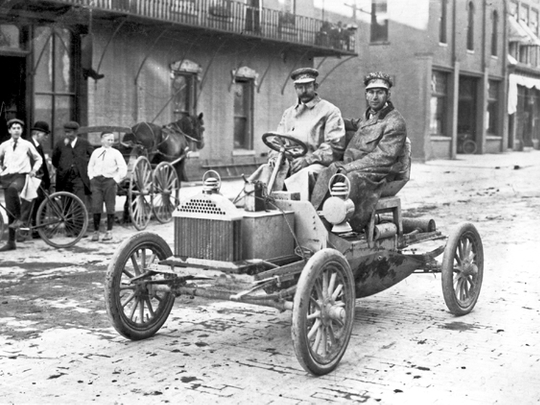
With a name like David Dunbar Buick, the last thing you’d associate the Scottish inventor with would be bathtubs, but that’s how it all began. And when his technique to get the enamel to stick to the iron and prevent rust was perfected, it gave him the means to concentrate on his real dream; building a car.
Born in 1854 in Arbroath, David got the pioneering spirit from his parents, who moved him when he was just two years old to the US. He lost his father when he was five and, as tragic as it was, this ensured he grew up quickly to support his widowed mother. At 15, he became an apprentice at Alexander Manufacturing Company in Detroit. It built plumbing fixtures, and he moved up the ranks and developed his skills as a brass finisher.
It began to struggle in 1882, so David and his colleague, William Sherwood, took over the business. During the 1880s, David was credited with patents for dozens of inventions, including a lawn sprinkler and a flushing device. By 1890, he’d grown tired of plumbing, so he sold his share of the company for $100,000 and delved into his next obsession; the internal combustion engine.
With time and money at his disposal, he started the Buick Auto-Vim and Power Company, where he could concentrate on his dream to build a car. He came up with the overhead valve engine and the first concept Buick car soon followed. The twin-cylinder engine was concealed under the floor and drove via a two-speed planetary transmission and a single chain to the rear axle.
It was a success — but he’d invested heavily in his passion and was out of cash. In 1903, he borrowed $5,000 from friend and businessman Ben Briscoe, and with it, the Buick Motor Car Company was born. But never truly business oriented, David’s finances were again in a mess. Briscoe heard that a company in Flint, Michigan, was thinking of starting car production, and sold his shares to James Whiting, who became president of Buick Motor Co — making David an employee with little to no say in his namesake company.
Still, he was able to continue his attempts to perfect the valve-in-head engine, and in 1904, he installed it into a concept car and convinced Whiting to put it into production. Things were looking up for David, but when William Durant acquired a controlling interest from Whiting, they took a turn for the worse. In 1908, Durant handed David a $100,000 severance check and he was made to leave the company he’d created.
He tried his hand in the oil and real estate business, but both ventures failed. He served as an instructor at the Detroit School of Trades in 1928 and, now 74, struggled to make a living, while Buick Motor Car Co went from strength to strength. Durant acquired Oldsmobile and Cadillac to form General Motors. Later, Chevrolet, Britain’s Vauxhall and Germany’s Opel joined GM, and the automaker was producing more than 300,000 cars a year in the Twenties.
Those at the helm were sitting very pretty. In stark contrast, when he died of cancer in 1929, David was impoverished and long forgotten. It was a sad end to a life that promised much. He never grasped the complexities of business, most inventors don’t; had he done, then at the time of his death, his shares in Buick Motor Co would have been worth $10million.











